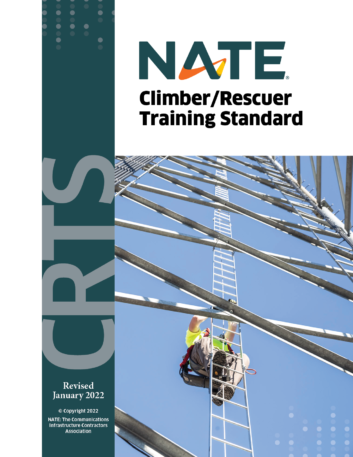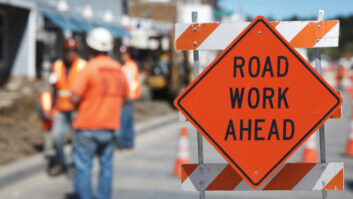 A new climber rescue training standard has been issued by NATE: The Communications Infrastructure Contractors Association.
A new climber rescue training standard has been issued by NATE: The Communications Infrastructure Contractors Association.
The new document, known as the Climber/Rescuer Training Standard (CRTS), is designed to assist in standardizing fall-protection and rescue training for climbers in the tower and communications infrastructure industry.
Guidelines in the newest version of the NATE CRTS include new evaluation strategies an employer can use to properly identify authorized climbers/rescuers. The new document also offers guidelines to help an employer develop and maintain its fall-protection program, which can be used to comply with the ANSI/ASSP A10.48 “Criteria for Safety Practices with the Construction, Demolition, Modification and Maintenance of Communications Structures” standard and other regulations.
[Related: NATE, OSHA and FCC in Safety Partnership]
The new document replaces the fourth edition of the NATE training standard and is available in electronic format at no cost to NATE members and for purchase to non-members.
The development of the new CRTS is a by-product of hours of sweat equity from prominent subject-matter experts, said John Paul Jones, a member of the NATE board of directors who presided over the ad-hoc committee that produced the new document.
“NATE is thrilled to offer this new CRTS resource to better facilitate and standardize climber and rescue training and ultimately improve safety in the industry,” said Kathy Stieler, director of safety, health and compliance for NATE. “This new CRTS document instantly becomes the association’s signature safety resource and provides an invaluable tool in the toolbox to ensure that climbing and rescue training is consistent regardless of who is conducting the training.”
Other features in the new standard include a series of training topics, details on the skill that a climber should possess and guidance on setting a baseline of knowledge for tower professionals.
At the organization’s NATE UNITE 2022 Conference in Las Vegas on February 22, the association will host an educational session exploring all aspects of the new CRTS update.
Across all worksites and industries, fall protection was the most commonly cited standard violation by OSHA in 2020, the most recent year for which data has been reported.







